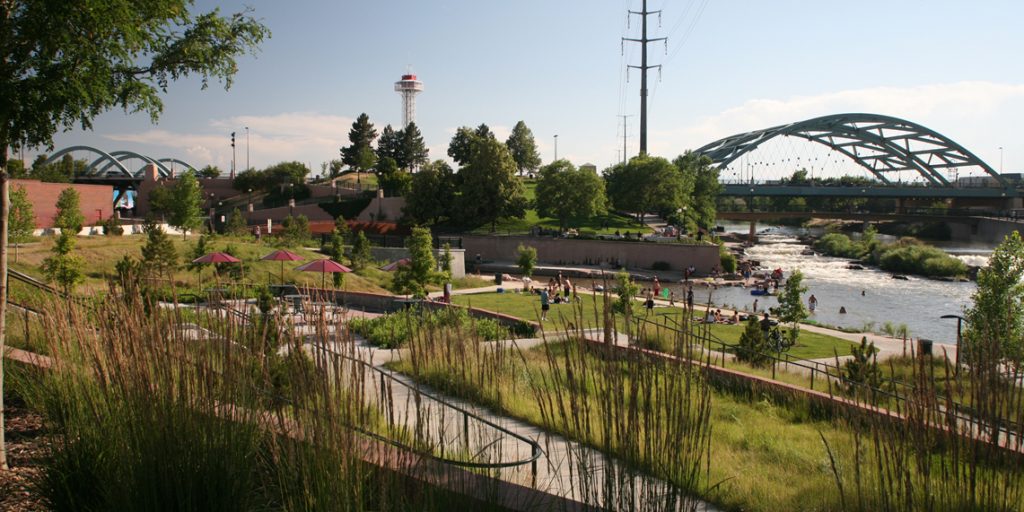Making urban placemaking equitable through collaboration
What makes a city a city? Ask 10 people, and you’ll likely receive 10 different answers: the community, the buildings, the culture, the restaurants.
But one element that has an outsized impact on a city’s character—yet is often overlooked—is urban placemaking. Urban placemaking is an overarching approach and a set of hands-on strategies that center public spaces, including parks, plazas or civic hubs, in the everyday life of a community and a city. Placemaking seeks to strengthen communities by creating stronger connections to place and reflecting community identities.
When done right, urban placemaking can tie a city and its community together, improving quality of life. But it’s not as simple as laying down some turf, installing park benches and planting maple trees. To succeed, urban placemaking must be done in a thoughtful, equitable fashion. Below, find four tips for tackling urban placemaking in your municipality.
Understand what “urban placemaking” really means. Urban placemaking doesn’t simply mean building a park. It’s about weaving together public spaces in a way that complement each other and serve the community. Some cities have converted streets and sidewalks to serve pedestrians and dining. Other examples include farmers’ markets, pop-up businesses, live concerts or food trucks. A big part of urban placemaking is centered on revitalizing underused public spaces. Indeed, a recent report by the Knight Foundation stresses that “transforming underutilized spaces inspires locals to rediscover what’s nearby.”
Engage the most affected stakeholders. Once the development process begins, don’t do it behind closed doors. Instead, cast a wide net. Municipalities should be listening to the groups most affected by changes to public spaces. Start by conducting an audit: Who is using your municipality’s public spaces? Who depends on them most? These people should be your key stakeholders as decisions are made. Also, consider the demographics of the community members you’re speaking with. The relationship between income and access to public space is complicated. According to the Brookings Institute, while the social and health benefits of access to public space are well-documented, efforts to increase access to public space can lead to real or perceived threats to community character and can fall short on benefits to underserved residents and businesses. This means urban placemaking efforts must pay special attention to vulnerable communities.
Prioritize equity, not exclusion. The “public” in “public spaces” can be misleading. Often, portions of a community are excluded from these areas. Many public spaces have long histories of exclusion—community members who can’t fully utilize the space due to its location, its activities or its accessibility. To prevent this in future urban placemaking, ensure you’re involving historically excluded communities in the planning process. Note: This should be a top priority in any public engagement process, not just ones around urban placemaking. It’s the foundation of equity and should be your number one objective.
As you engage the community, ensure everyone can participate in the planning process. That means virtual and in-person meetings, multilingual literature, and close collaboration with community leaders and other trusted people in the region.
Value accessibility and sustainability. The very best urban placemaking project is only a success if people can use it, and if it is able to adapt to meet changing needs over time. That’s why accessibility and sustainability are key principles for any urban placemaking initiative. Ensure your spaces are welcoming to all by designing them to accommodate a variety of uses. Multi-use spaces that can be programmed to support farmers’ markets, performances and casual use by passersby are key to establishing the space as a community asset and ensuring continued use and adaptation.
Tactical urbanism, or the use of low-cost, temporary interventions to activate a space, is a key placemaking tool and a great way to get your community involved. By leveraging temporary solutions, you can ensure that the space is able to be adapted for years to come.
Public spaces are at the heart of our cities, but they too often fall short. Whether they are developed without a truly inclusive public engagement process, or are unfairly distributed among higher-income residents, they often fail to serve the whole community. By deploying these four strategies for your next urban placemaking project, you can ensure your municipalities’ public spaces exceed expectations.
Celeste Frye, AICP is co-founder and CEO of Public Works Partners LLC, a WBE/DBE/SBE certified planning and consulting firm specializing in multi-stakeholder initiatives and building strong connections across the nonprofit, government, and private sectors. For more information, visit www.publicworkspartners.com.




















